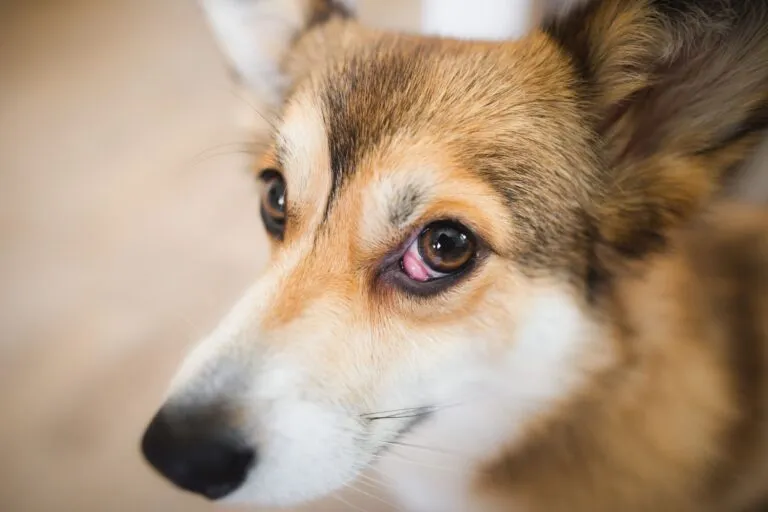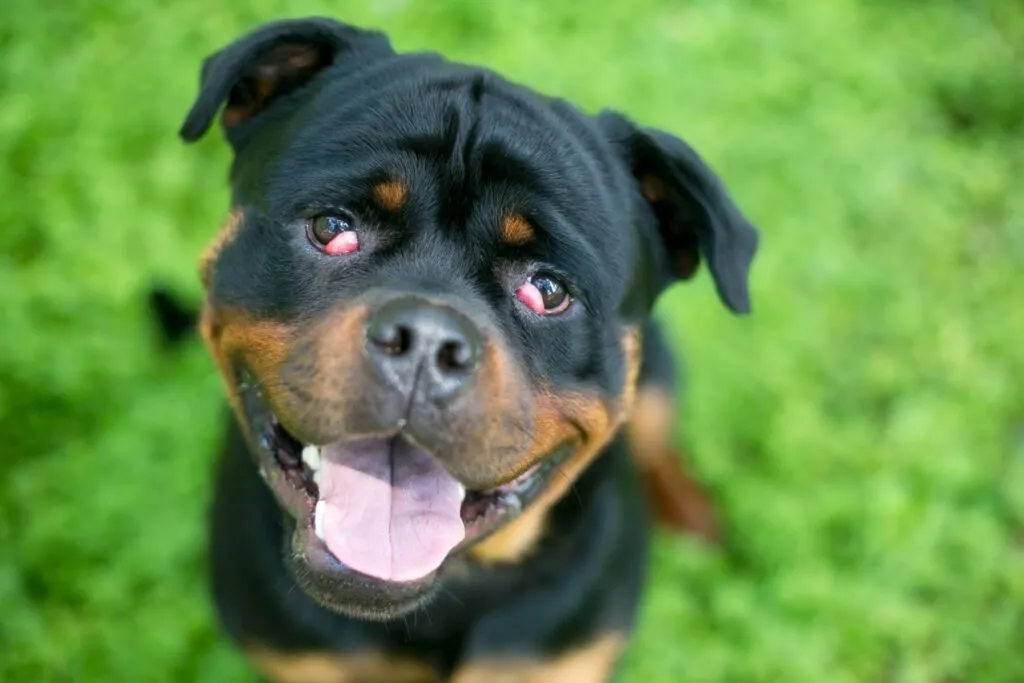In the best-case scenario, the nictitans gland will settle back down on its own, eliminating the need for further treatment. If it doesn’t, the vet can assist. A local anaesthetic will be used to tuck the slightly swollen nictitans gland back into place.
Surgical Fixation
If your dog’s nictitans gland is significantly swollen and prolapsed, surgical correction should be undertaken within a few weeks. Since your dog’s eyes are very sensitive, this procedure always takes place under general anaesthesia.
Once the dog is asleep, the vet can apply various techniques, one of the most common being:
- Small incisions to create a pocket under the eyeball
- Carefully placing the swollen nictitans gland into this pocket
- Depending on the degree of swelling, securing the gland with sutures
Note: The nictitans gland is essential for moistening the eye, and its removal is now considered outdated due to the negative impact on the eye through dryness.
Post-surgery Care: Supporting the Healing Process
- Following the operation, your vet will prescribe antibiotics in the form of eye drops or tablets, anti-inflammatories, and pain relief based on how the surgery went.
- To prevent scratching and ensure complete healing, fit your dog with a cone collar.
- Also, keep your dog away from dusty areas. Here, special, protective dog goggles can be useful.
- Do not bathe your dog post-operation to prevent water from getting into the eye.
What Complications Can Occur During Surgery?
Apart from redness and swelling, Cherry Eye surgery usually does not lead to further complications. On rare occasions, wound infections, suture failures, or the formation of cysts may occur. Corneal defects are also possible.
What Does a Cherry Eye Surgery Cost?
The cost of a Cherry Eye operation depends on various factors, including:
- The chosen surgical technique (unilater pocket technique or bilateral pocket technique)
- Possible complications during the surgery
In the UK, the cost for relocating and securing a nictitans gland typically ranges between £1200 and £2000. This total includes expenses for supplies, medication, anaesthesia and other related costs.
Tip: Obtain an estimate from your vet before undergoing the procedure.
Can I Treat Cherry Eye in My Dog Myself?
Due to the costs associated with Cherry Eye surgery, many dog owners wonder if they can massage or push the Cherry Eye back in place themselves. Although well-intended, these self-attempts generally have the opposite effect.
Since there’s a risk of injuring your dog’s eye, you should avoid self-treatment and consult a vet instead.

